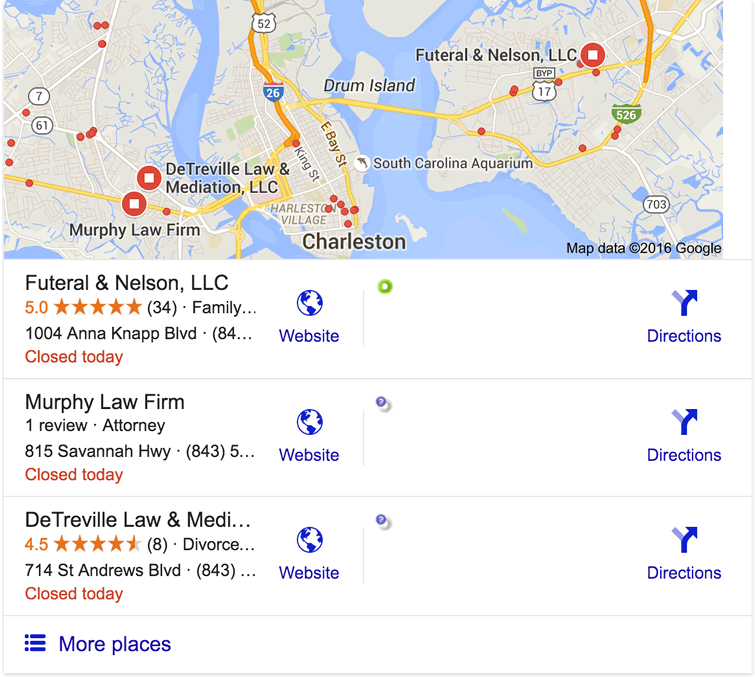As an SEO agency in Charleston, SC, we keep a close eye on any changes Google makes to displaying search results. For example, Google made a major change to the way it displays the top results in local search. Previously, the top seven results for a local search were grouped into their own panel at the top of the page called the 7 Pack. Digital marketing firms and SEO experts placed a lot of value on getting into the 7 Pack because it led to more traffic and better SEO outcomes. Google cut the 7 Pack down to just three results and also restructured the format of the panel, along with making some changes to the ways the algorithm ranks local results. In this post, we run down why Google made these changes and what they mean for you and your site.
Why Google Changed to the 3-Pack Display
One of the best ways to think about this change is in the context of Google’s broader push to better serve mobile users. The 7 Pack, shown below, was too large to fit onto one page on mobile devices.
On the other hand, the new 3 Pack, shown below, is just enough to function as the first page in a SERP for someone doing a local search on a smartphone.
Clicking or scrolling to the next page now coincides with moving away from the Pack. Google claims that the last four results weren’t getting much traffic, and it is plausible that they had mobile users in mind when they made this claim. Furthermore, Google also altered the appearance of the panel. Rather than showing phone numbers, the Pack is now more likely to show business hours and addresses.
Google has recently implemented a button to tap that will call the business, so there is less need for mobile users to see the phone number. However, they would want the address to put into their navigational app. There are a few broader changes Google made as well. For example, Google+ is no longer as important to page rank. This is a reflection of the fact that Google+ is just not very popular. The SERPs still tend to display star ratings from reviews on G+ pages, but having an active G+ account is not a big determinant of ranking anymore. Being active in local search directories is, however.
How to Get Your Website into the Google Local 3-Pack
Now that Google has reduced the display from 7 to 3, let’s look at how to get into those coveted three spots. Having a consistent Name/Address/Phone Number (NAP) is quite important because Google places a lot of weight on having that information accurate and correct. If you have it in the right format across many different sources, then you will rank higher because Google can be sure that it is listing the right contact info for your business. In addition, becoming active on local listings sites might be the most important single factor for performing well in local search. These include one-off sites like churches or community bulletin boards as well as listings that are more common across different areas, like the website for the local Chamber of Commerce. The more you can appear in these listings, the more Google trusts your business.
It is not uncommon for a small business that is listed on a few local listings without much traffic to beat out big chains that have a location in that area: that is how strong the effect of your presence on a listings site can be. This is because Google wants to give searchers a good experience by emphasizing the results that are truly local, and it uses these sites as a good way to determine that.
When it comes to mobile local search, it is becoming more important than ever to make sure your site is mobile-responsive. Google is pushing sites towards becoming more friendly to mobile users because the proportion of Internet users on mobile devices is large and growing. It’s already a good idea to try to target them for their business, and now you have strong SEO reasons for doing so. The so-called “Mobilegeddon” update tweaked the rankings so that responsive pages are pushed to the top for mobile searches. If you are using responsive design, then that increases your chances of getting into the top 3. This is especially valuable for mobile local search because all results outside the top 3 are hidden behind a scroll or page turn.
The bottom line is that local search and mobility are two aspects of SEO work that take their cue from Google’s overall strategy. Take steps to get on local listings and use responsive web design, and keep an eye out for future algorithm updates. You can get ahead of them by doing everything you can to appeal to mobile users and to demonstrate your connection to your local community.







